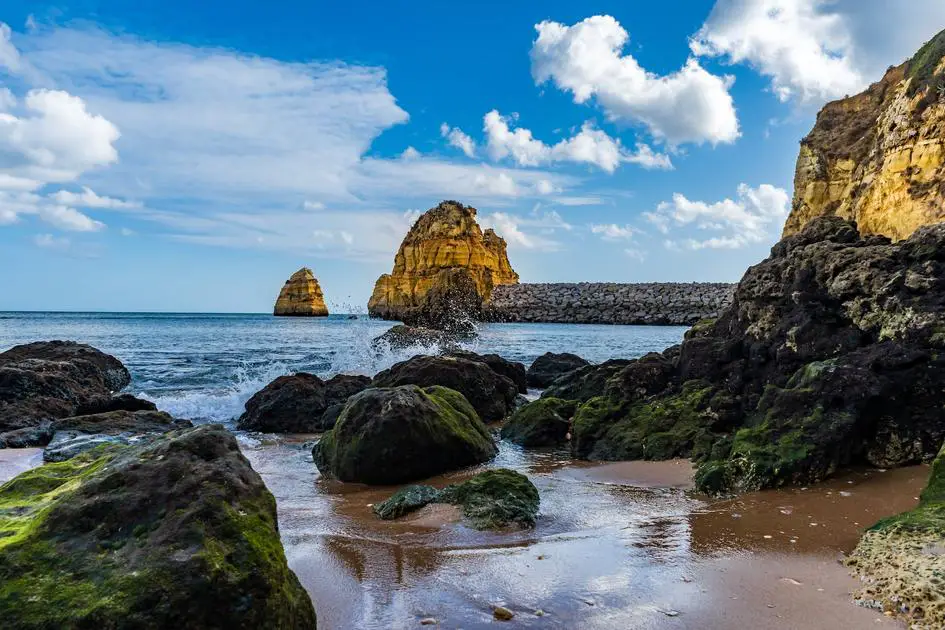Algae and euglenoids are both intriguing organisms that play essential roles in diverse ecosystems. If you’re curious about their commonalities and distinct features, never fear, as we’ve got you covered. The following article delves into the key similarities and differences between these two fascinating life forms, and by the time you’re done reading, you’ll be an expert on all things algae and euglenoid.
Key similarity: Both algae and euglenoids are involved in photosynthesis, which is the process through which they convert light energy into chemical energy. They accomplish this by using pigments like chlorophyll, which is essential for capturing light energy and turning it into food.
Now, let’s journey through our exploration of these intriguing organisms by unraveling their origins, appearances, and other unique characteristics.
Algae Overview
Algae are predominantly water-dwelling organisms that can be found in both freshwater and marine environments [1]. While algae are often thought of as simple plants, they possess unique features that set them apart from their plant relatives.
Types of Algae
Algae can be classified into three main categories:
- Green algae
- Red algae
- Brown algae
Each group of algae has distinct characteristics and specialized pigments that contribute to their unique appearances [2].
Euglenoids Overview
Euglenoids are single-celled organisms that have characteristics of both plants and animals. They are generally free-swimming and can be found in freshwater environments.
Types of Euglenoids
Euglenoids can be classified into two main categories:
- Photosynthetic euglenoids
- Non-photosynthetic euglenoids
Each group possesses unique features and abilities that contribute to their specific roles in the ecosystem.
Common Ground: Photosynthesis
As mentioned earlier, one of the key similarities between algae and euglenoids is their involvement in photosynthesis. This essential process helps to maintain a balance of oxygen and carbon dioxide in ecosystems, contributing to the overall health and balance of the planet [3].
The Role of Chlorophyll
Both algae and euglenoids rely on chlorophyll as their primary pigment for photosynthesis. This substance absorbs light energy and converts it into the chemical energy needed to create food and maintain life [4].
Distinct Appearances
Though algae and euglenoids are both involved in photosynthesis, they have different physical features that set them apart from each other.
Algae Appearance
Almost all algae have a distinct plant-like appearance and are generally green, red, or brown in color. These hues are attributed to the various pigments that help them with photosynthesis [5].
Green algae: Green algae are primarily green due to the presence of chlorophyll a and b. These pigments allow the algae to perform photosynthesis effectively and set the stage for a vibrant underwater landscape [6].
Red algae: Red algae get their distinct appearance due to their red pigments, known as phycobiliproteins. These pigments help the red algae to harness light energy in deeper water, where they often reside [7].
Brown algae: Brown algae are typically brownish-yellow or olive in color, and they owe their hue to a pigment called fucoxanthin. Similar to red algae, this pigment helps brown algae to effectively capture sunlight in varying environmental conditions.
Euglenoid Appearance
Euglenoids, on the other hand, are typically elongated, single-celled organisms that have a unique whip-like structure known as a flagellum.
The whip-like structure helps euglenoids move about in their environment, a feature that distinguishes them from most types of algae [8].
The Algae-Euglenoid Evolutionary Connection
Interestingly, it is believed that both algae and euglenoids share a common evolutionary ancestor. This ancient connection may be responsible for their shared ability to perform photosynthesis using chlorophyll pigments, despite their distinct appearances and characteristics [9].
In conclusion, algae and euglenoids exhibit some surprising similarities, the most notable of which is their shared ability to perform photosynthesis. These life forms’ respective pigmentations set them apart, but ultimately, their connections to the ancient evolutionary ancestor they share make them even more fascinating to study and understand.
FAQs
- What are the key similarities between algae and euglenoids?
Both algae and euglenoids are involved in photosynthesis and rely on chlorophyll pigments to convert light energy into chemical energy.
- What are the main differences between algae and euglenoids?
The primary differences between algae and euglenoids lie in their appearances and some of their abilities. Algae are typically green, red, or brown and have a plant-like appearance, while euglenoids are single-celled organisms with a whip-like structure called a flagellum.
- Are algae and euglenoids related?
It is believed that algae and euglenoids share a common evolutionary ancestor. This connection may be responsible for their shared ability to perform photosynthesis using chlorophyll pigments.
- Do algae and euglenoids share the same pigments?
Both algae and euglenoids rely on chlorophyll as their primary pigment for photosynthesis. However, red and brown algae also have additional specialized pigments that contribute to their unique appearances.
- Can euglenoids live in marine environments?
Euglenoids are primarily found in freshwater environments, while algae can be found in both freshwater and marine ecosystems.

